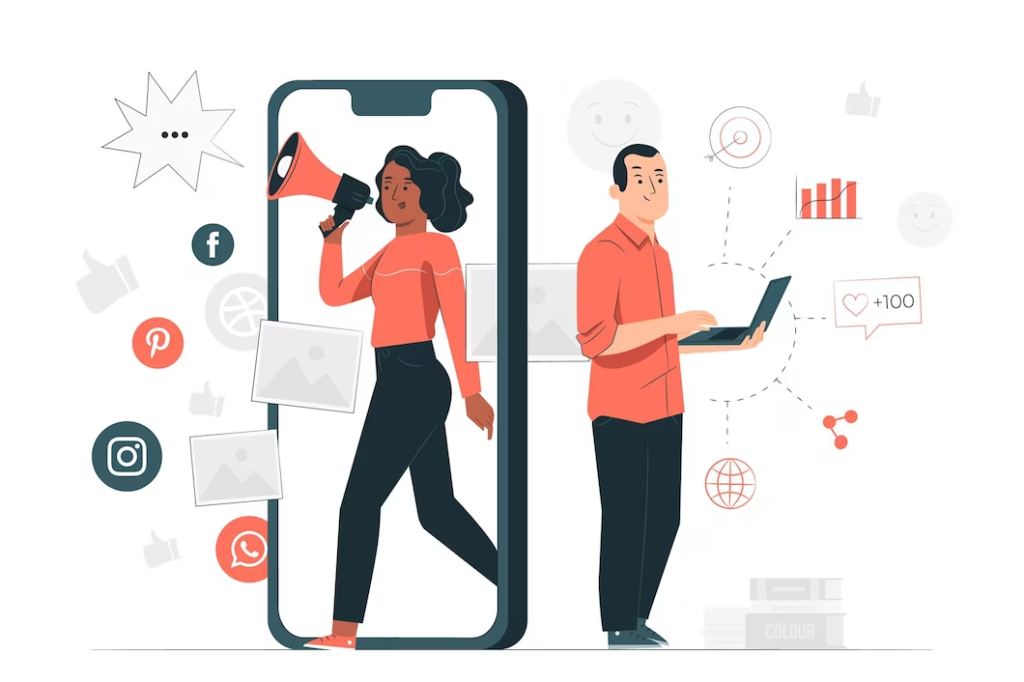Native advertising is a powerful marketing strategy that seamlessly blends promotional content with the organic content of a platform. Unlike traditional advertising, native ads mimic the form and function of the platform on which they appear, making them less intrusive and more engaging for the audience. This approach allows businesses to reach their target audience more subtly and effectively by seamlessly integrating promotional content into the overall user experience, ensuring that the ads match the visual design, style, and functionality of the platform. This integration minimizes disruption for users, making the advertising content feel native to the platform and, as a result, more engaging and trustworthy.
Native advertising has become a popular marketing strategy in recent years, and it comes with its own set of advantages and disadvantages. Understanding these advantages and disadvantages of native advertising can help businesses make informed decisions about incorporating this marketing strategy into their mix.
Here are some of the key advantages and disadvantages of native advertising:
Advantages of Native Advertising
1. Seamless Integration: Native ads are known for their seamless integration into the natural flow of the platform, avoiding the disruption often associated with traditional advertising. By adopting the look and feel of the surrounding content, native ads provide a more organic and enjoyable experience for users. This seamless integration not only captures users’ attention but also contributes to a positive perception of the brand. As users navigate through the platform, encountering advertising that feels like a natural extension of the content enhances overall user satisfaction.
2. Increased Engagement: The harmonious integration of native ads with the platform’s content contributes to higher engagement levels. Users are more likely to interact with content that aligns with their expectations and interests. Native ads, by mirroring the format and style of the surrounding material, generate a sense of relevance, encouraging users to explore the content further. This increased engagement manifests in higher click-through rates, social shares, and other forms of interaction. As users willingly engage with the content, brands have the opportunity to convey their message more effectively and build a stronger connection with their audience.
3. Enhanced Trust and Credibility: Native ads can be perceived as more trustworthy because they don’t look like traditional ads. When done right, they can build trust with the audience by providing valuable and relevant information.
4. Improved Ad Blocker Resistance: Native ads are less likely to be blocked by ad blockers since they mimic the appearance of regular content. This helps ensure that your message reaches your target audience.
5. Targeted Reach: Native advertising platforms often provide sophisticated targeting options, allowing advertisers to reach specific demographics and interests. This can lead to a higher ROI by reaching the right people with the right message. Consider a cosmetics brand, for instance, which can strategically place its content on a beauty blog or a fashion website where individuals have already shown an interest in related content.
To delve deeper into the topic and gain valuable insights, you can read BrandShift’s blog post on ‘What is Native Advertising?‘

Negatives of Native Advertising
1. Disclosure Concerns: One of the main criticisms of native advertising is that it can be deceptive if not clearly labeled as sponsored content. This can erode trust and lead to negative reactions from users.
2. Ethical Issues: Some native ads may blur the line between editorial content and advertising, raising ethical concerns about transparency and honesty in marketing practices. An example is when a news website publishes an article that appears to be an impartial editorial piece but is sponsored by a company. This blurring of lines can mislead readers and compromise the integrity of journalistic standards.
3. Limited Control: Advertisers may have limited control over the context in which their native ads appear. This can be a concern if the surrounding content is controversial or unfavorable. For instance, a brand’s native ad on a social media platform might appear alongside user-generated content that contradicts the brand’s values, potentially causing brand association issues.
4. Expensive: Native advertising campaigns can be costly, particularly on high-traffic platforms. Advertisers often pay a premium for the benefits of native advertising. For example, a brand aiming to promote a product through native advertising on a popular online publication may face higher costs compared to traditional display advertising, impacting the overall marketing budget.
5. Content Quality: Native ads need to provide value and be relevant to the platform’s audience. Poorly executed native ads that lack quality can harm the advertiser’s reputation. An instance of this could be a native ad on a lifestyle blog that fails to align with the blog’s usual content, leading to negative audience reactions and damaging the brand’s image.
6. Time-consuming: Because native ads are inherently more engaging than traditional ads, their production tends to be more intricate. They must seamlessly integrate into the content surrounding them, whether it’s an article page, social media feed, or search results. Simultaneously, they must swiftly capture people’s attention by delivering immediate value and motivating them to click for further information.
In summary, native advertising has the potential to be an effective marketing strategy when used correctly, but it also comes with ethical and transparency challenges. Businesses need to strike a balance between seamlessly integrating their message with the content and maintaining transparency to ensure a positive user experience and maintain trust with their audience.
At BrandShift, we shall explore more aspects of native advertising in our next article. Stay tuned. Feel free to reach out to BrandShift and share your thoughts with us.

